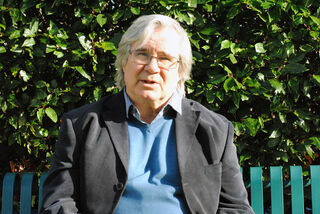Health
Report Finds Monitoring of Electroshock Treatment Unsafe
Independent audit finds major flaws in the administration and regulation of ECT.
Posted March 15, 2021 Reviewed by Ekua Hagan
- Studies have shown electroconvulsive therapy (ECT) is barely more effective than placebo and can cause brain damage.
- A new audit asserts that ECT is not adequately monitored by England's Royal College of Psychiatrists.
- The audit's researchers have called for an independent government-sponsored review of ECT clinics.
One of my previous blog posts summarized a review of the research1 on electroconvulsive therapy (ECT), which I conducted with Professors Irving Kirsch of Harvard Medical School. We found little evidence that ECT is better than a placebo during the treatment period and none at all for beyond the end of treatment.

Our conclusion that there is absolutely no evidence for the claim that ECT prevents suicide has since been confirmed by a study of 14,810 ECT patients and 58,369 controls.2 Patients in the ECT group were 16 times more likely to try to kill themselves over 12 months than the non-ECT patients. Even after controlling for other variables, the ECT patients were 1.3 times more likely to die by suicide.
Our review also found persistent or permanent memory loss in a large proportion of patients, and a much smaller, but significant, mortality risk, primarily from heart failure.3
Given the risks of brain damage and death, one might assume that this treatment is administered with extreme caution and is thoroughly scrutinized by government and professional bodies. However, our first independent audit,4 covering 2011-2015, found that this was definitely not the case in England. Our second audit, for 2019,5 has just been published (March 17, 2021). We found no improvement and, in some domains, a decline in standards.
Freedom of Information Act requests were sent to 56 National Health Service Trusts. Thirty-seven trusts (66 percent) provided data. The audit confirmed that about 2,500 people are still being given ECT annually in England (compared to about 50,000 in the 1970s).
There was a 47-fold difference between the Trusts with the highest and lowest usage rates per capita. Thus, the probability of getting ECT seems to be a postcode lottery based on the personal opinions of one or two local psychiatrists. Such regional variation is found within other countries and also between countries.6
Women continue to be twice as likely as men to receive the treatment, and the majority of patients (58 percent) are over 60. This is despite women and older people being particularly prone to memory loss following ECT.7
More than one in three patients (37 percent) are being given ECT against their will, and 18 percent of Trusts are not complying with the law regarding the process for seeking a second opinion about mental capacity before deciding on compulsory treatment.
There were slight declines, compared to the first audit, in the use of appropriate measures to assess whether the treatment worked, down to 30 percent, and standardized measures of memory loss, down to 24 percent.
Only one Trust could report how many people had received psychological therapy prior to ECT, as required by our government (N.I.C.E.) guidelines.
The majority of Trusts were unable to provide any data for positive outcomes or for adverse effects during the treatment period (typically three weeks). None provided data beyond the end of treatment for either positive or negative outcomes.
ECT in England is supposed to be monitored by the Royal College of Psychiatrists via their "ECT Accreditation Service" (ECTAS). But ECTAS does not monitor some of the issues addressed by this independent audit, such as how many Trusts are using proper assessment measures, how many are complying with the Mental Health Act regarding second opinions for compulsory forced treatment, and how many ECT patients had first been offered psychological treatment. ECTAS has no powers to sanction ECT clinics that fail to meet even their limited set of standards and has never disaccredited an ECT clinic. The most recent ECTAS Data Set for the UK and Ireland reports that 29 percent of ECT Clinics were not audited in 2018-2019 and that 11 percent have nothing to do with ECTAS at all.
Dr. Sue Cunliffe, one of the audit’s authors, worked as a pediatrician until the damage caused by having ECT made it impossible for her to work as a doctor. She has been studying ECTAS for 10 years. In our media release, Sue wrote:
“ECTAS's polished exterior gives the false impression of a professional body committed to best practice. However, close inspection of their ECT handbook and website reveals numerous serious issues including the failure to develop standardized testing to prevent permanent brain damage.”
The current audit found something that we did not see in our first audit: "12 trusts used identical sentences to each other, verbatim, in response to one or more questions," rather than reporting what was actually happening in their own Trust. Co-author Dr. Christopher Harrop wrote to the 12 to ask about the source of the identical responses. Chris comments in the media release that:
“We were alarmed to be told that the source of all the duplicated statements used by the 12 Trusts was ECTAS. The Royal College of Psychiatry should not have any influence on how individual NHS Trusts respond to independent audits.”
Our audit reports that one Freedom of Information Officer wrote:
“The ECT department have also requested that the following be included in this response: There is a mistruth being propagated by an extreme anti-ECT lobby that ECT causes ‘brain damage.’ This misinformed opinion has no factual basis. None of our patients demonstrate any symptoms of ‘brain damage,’ and some of our patients are only alive because they were given ECT.”
Our second audit, like the first, contradicts the statement made by the Department of Health when Dr. Rosena Allin-Khan, Shadow Minister for Mental Health, raised these issues in Parliament, that "ECT is tightly regulated." Since there is no requirement to meet even the minimum standards set out by ECTAS, it would be more accurate to claim that it is not regulated at all.
Relying on the Royal College of Psychiatry to monitor ECT clinics is not working because of the obvious conflict of interest. That is why our audit concluded:
“Given the apparent failure of current monitoring and accrediting ECT clinics in England, by the Royal College of Psychiatrists’ ECT Accreditation Service (ECTAS), an independent government-sponsored review is urgently needed.”
This call (and the associated petition) is supported by Mind (the UK’s largest mental health NGO), the Royal College of Nursing, the Association of Clinical Psychologists, and Headway (the brain injury association), plus many MPs, from both opposition and government parties.
A similar campaign is underway in the USA.
References
1. READ, J., KIRSCH, I., McGRATH, L. (2019). Electroconvulsive Therapy for depression: A Review of the quality of ECT vs sham ECT trials and meta-analyses. Ethical Human Psychiatry and Psychology, 21, 64-103.
2. PELTZMAN, T. et al. (2021). Effects of Electroconvulsive Therapy on Short-Term Suicide Mortality inRisk-Matched Patient Population. Journal of ECT, 36, 187-194
3. DUMA, A. et al. (2019). Major Adverse Cardiac Events and Mortality Associated with Electroconvulsive Therapy: A Systematic Review and Meta-analysis. Anesthesiology 2019, 130, 83–91.
4. READ, J., HARROP, C., GEEKIE, J., RENTON, J. (2018). An audit of ECT in England 2011-2015: Usage, demographics, and adherence to guidelines and legislation. Psychology and Psychotherapy: Theory, Research and Practice, 91, 263-277.
5. READ, J., HARROP, C., GEEKIE, J., RENTON, CUNLIFFE, S. (2021). A second independent audit of ECT in England: Usage, demographics, consent, and adherence to guidelines and legislation in 2019. Psychology and Psychotherapy: Theory, Research and Practice, in press. doi: 10.1111/papt.12335
6. LEIKNES, K. et al. (2012). Contemporary use and practice of electroconvulsive therapy worldwide. Brain and Behavior, 2, 283-344.
7. SACKEIM, H. et al. (2007). The cognitive effects of electroconvulsive therapy in community settings. Neuropsychopharmacology, 32, 244-254.




